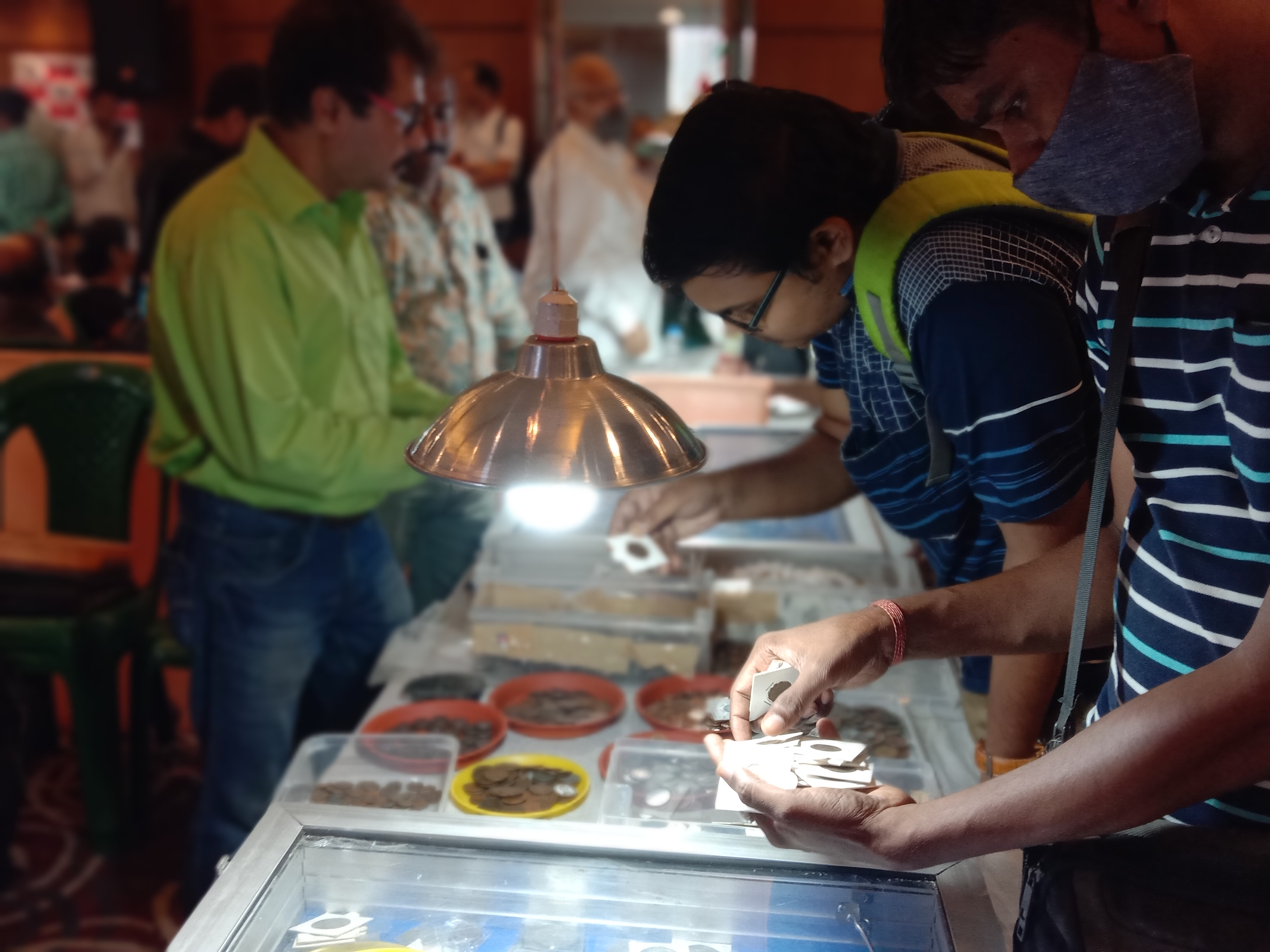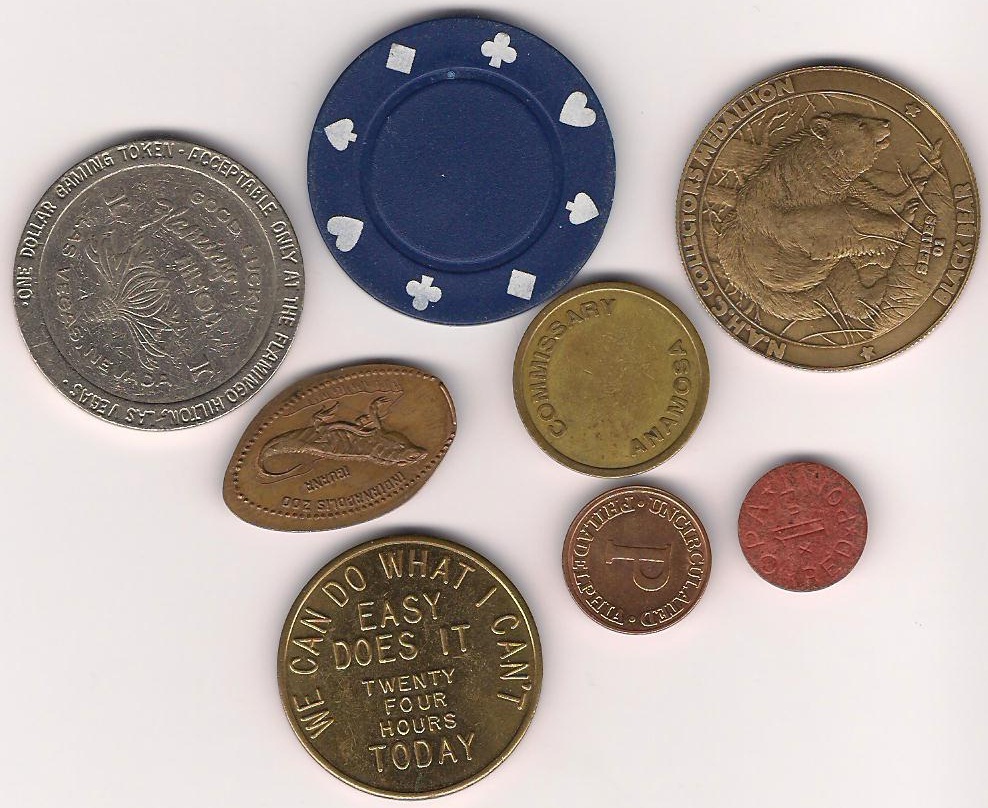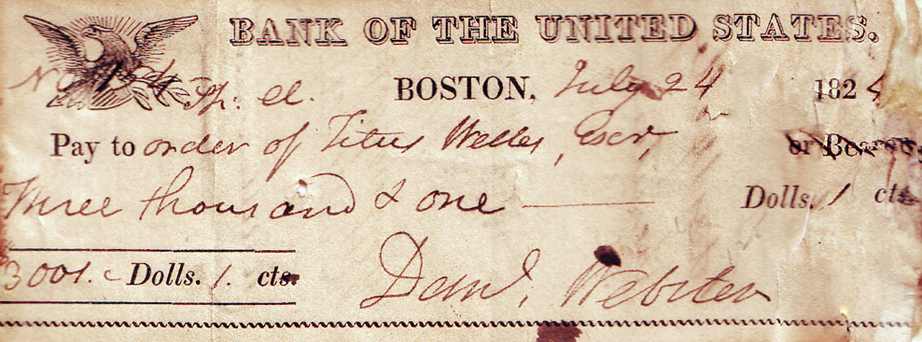|
Feuchtwanger Cent
The Feuchtwanger cent was a nickel silver private token coin circulated in the U.S. by Lewis Feuchtwanger during the 1830s and 1840s. Three-cent varieties were also available, though not as plentiful as the one-cent tokens. The tokens were originally created as patterns to demonstrate a new type of metal for coinage; but when these proposals failed, they were temporarily used by the public during depressions to accommodate a shortage of small change. History Lewis Feuchtwanger (born in Fürth, Bavaria on January 11, 1805) received a doctorate at the university of Jena and then moved to New York City. He was primarily a mineralogist, metallurgist, and chemist, but also worked as a physician and was a member of a number of learned societies. He wrote four books on mineralogy and chemicals. In 1837, to alleviate the need for small change during the Hard Times, Feuchtwanger created tokens made of argentan (commonly known as "German silver"), an alloy made of copper, nickel, zin ... [...More Info...] [...Related Items...] OR: [Wikipedia] [Google] [Baidu] |
German Silver
Nickel silver, Maillechort, German silver, Argentan, new silver, nickel brass, albata, alpacca, is a copper alloy with nickel and often zinc. The usual formulation is 60% copper, 20% nickel and 20% zinc. Nickel silver does not contain the element silver. It is named for its silvery appearance, which can make it attractive as a cheaper and more durable substitute. It is also well suited for being plated with silver. A naturally occurring ore composition in China was smelted into the alloy known as or () ("white copper" or cupronickel). The name "German Silver" refers to the artificial recreation of the natural ore composition by German metallurgists.Joseph Needham, Ling Wang, Gwei-Djen Lu, Tsuen-hsuin Tsien, Dieter Kuhn, Peter J Golas''Science and civilisation in China'' Cambridge University Press: 1974, , pp. 237–250 All modern, commercially important, nickel silvers (such as those standardized under ASTM B122) contain significant amounts of zinc and are sometimes considere ... [...More Info...] [...Related Items...] OR: [Wikipedia] [Google] [Baidu] |
Numismatics
Numismatics is the study or collection of currency, including coins, tokens, paper money, medals and related objects. Specialists, known as numismatists, are often characterized as students or collectors of coins, but the discipline also includes the broader study of money and other means of payment used to resolve debts and exchange goods. The earliest forms of money used by people are categorised by collectors as "Odd and Curious", but the use of other goods in barter exchange is excluded, even where used as a circulating currency (e.g., cigarettes or instant noodles in prison). As an example, the Kyrgyz people used horses as the principal currency unit, and gave small change in lambskins; the lambskins may be suitable for numismatic study, but the horses are not. Many objects have been used for centuries, such as cowry shells, precious metals, cocoa beans, large stones, and gems. Etymology First attested in English 1829, the word ''numismatics'' comes from the adje ... [...More Info...] [...Related Items...] OR: [Wikipedia] [Google] [Baidu] |
Exonumia
Exonumia are numismatic items (such as tokens, medals, or scrip) other than coins and paper money. This includes "Good For" tokens, badges, counterstamped coins, elongated coins, encased coins, souvenir medallions, tags, wooden nickels and other similar items. It is related to numismatics (concerned with coins which have been legal tender), and many coin collectors are also exonumists. Besides the above strict definition, others extend it to include non-coins which may or may not be legal tenders such as cheques, credit cards and similar paper. These can also be considered notaphily or scripophily. Etymology The noun ''exonumia'' is derived from two classical roots: ''exo'', meaning "out-of" in Greek, and '' nummus'', meaning "coin" in Latin (from Greek νοῦμμος – ''noummos'', "coin"); thus, "out ideof-he categoryoins". Usually, the term "exonumia" is applied to these objects in the United States, while the equivalent British term is paranumismatica. The w ... [...More Info...] [...Related Items...] OR: [Wikipedia] [Google] [Baidu] |
Historical Currencies Of The United States
History (derived ) is the systematic study and the documentation of the human activity. The time period of event before the invention of writing systems is considered prehistory. "History" is an umbrella term comprising past events as well as the memory, discovery, collection, organization, presentation, and interpretation of these events. Historians seek knowledge of the past using historical sources such as written documents, oral accounts, art and material artifacts, and ecological markers. History is not complete and still has debatable mysteries. History is also an academic discipline which uses narrative to describe, examine, question, and analyze past events, and investigate their patterns of cause and effect. Historians often debate which narrative best explains an event, as well as the significance of different causes and effects. Historians also debate the nature of history as an end in itself, as well as its usefulness to give perspective on the problems of the p ... [...More Info...] [...Related Items...] OR: [Wikipedia] [Google] [Baidu] |
Civil War Token
Civil War tokens are token coins that were privately minted and distributed in the United States between 1861 and 1864. They were used mainly in the Northeast and Midwest. The widespread use of the tokens was a result of the scarcity of government-issued cents during the Civil War. Civil War tokens became illegal after the United States Congress passed a law on April 22, 1864, prohibiting the issue of any one or two-cent coins, tokens or devices for use as currency. On June 8, 1864, an additional law was passed that forbade all private coinage.Yeoman, R.S., ''A Guide Book of United States Coins'' (2004 edition), Whitman Publishing, 2003. Civil War tokens are divided into three types—store cards, patriotic tokens, and sutler tokens. All three types were utilized as currency, and are differentiated by their designs. The collectible value of the tokens is determined chiefly by their rarity. History By 1862, the second year of the Civil War, government-issued coinage began vani ... [...More Info...] [...Related Items...] OR: [Wikipedia] [Google] [Baidu] |
Hard Times Token
Hard-times tokens are American large or half cent-sized copper tokens, struck from about 1833 through 1843, serving as unofficial currency. These privately made pieces, comprising merchant, political and satirical pieces, were used during a time of political and financial crisis in the United States. Today, hard-times tokens are collectible and usually very affordable as coins or as political history. Background In 1832, President Andrew Jackson ran for re-election and called for the abolition of the Second Bank of the United States. While he won the election, he worked to weaken the bank before the charter expired in 1836. Without the Bank of the United States, state banks attempted to fill the paper money gap and issued a large number of bank notes, which fueled inflation. Hoping to halt the inflation and speculation in public lands, Jackson and his Treasury secretary, Levi Woodbury, issued the Specie Circular on July 11, 1836. The circular simply stated that as of Augus ... [...More Info...] [...Related Items...] OR: [Wikipedia] [Google] [Baidu] |
Pharmacy
Pharmacy is the science and practice of discovering, producing, preparing, dispensing, reviewing and monitoring medications, aiming to ensure the safe, effective, and affordable use of medication, medicines. It is a miscellaneous science as it links health sciences with pharmaceutical sciences and natural sciences. The professional practice is becoming more clinically oriented as most of the drugs are now manufactured by pharmaceutical industries. Based on the setting, pharmacy practice is either classified as community or institutional pharmacy. Providing direct patient care in the community of institutional pharmacies is considered clinical pharmacy. The scope of pharmacy practice includes more traditional roles such as compounding and dispensing of medications. It also includes more modern services related to health care including clinical services, reviewing medications for safety and efficacy, and providing drug information. Pharmacists, therefore, are experts on drug ther ... [...More Info...] [...Related Items...] OR: [Wikipedia] [Google] [Baidu] |
United States Mint
The United States Mint is a bureau of the Department of the Treasury responsible for producing coinage for the United States to conduct its trade and commerce, as well as controlling the movement of bullion. It does not produce paper money; that responsibility belongs to the Bureau of Engraving and Printing. The first United States Mint was created in Philadelphia in 1792, and soon joined by other centers, whose coins were identified by their own mint marks. There are currently four active coin-producing mints: Philadelphia, Denver, San Francisco, and West Point. History The Massachusetts Bay Colony established a mint in Boston in 1652. John Hull was Treasurer and mintmaster; Hull's partner at the "Hull Mint" was Robert Sanderson. The historical marker reads: The first authorization for the establishment of a mint in the United States was in a resolution of the Congress of the Confederation of February 21, 1782, and the first general-circulation coin of the United States, ... [...More Info...] [...Related Items...] OR: [Wikipedia] [Google] [Baidu] |
United States Congress
The United States Congress is the legislature of the federal government of the United States. It is bicameral, composed of a lower body, the House of Representatives, and an upper body, the Senate. It meets in the U.S. Capitol in Washington, D.C. Senators and representatives are chosen through direct election, though vacancies in the Senate may be filled by a governor's appointment. Congress has 535 voting members: 100 senators and 435 representatives. The U.S. vice president The vice president of the United States (VPOTUS) is the second-highest officer in the executive branch of the U.S. federal government, after the president of the United States, and ranks first in the presidential line of succession. The vice pr ... has a vote in the Senate only when senators are evenly divided. The House of Representatives has six non-voting members. The sitting of a Congress is for a two-year term, at present, beginning every other January. Elections are held every even-n ... [...More Info...] [...Related Items...] OR: [Wikipedia] [Google] [Baidu] |
Second Bank Of The United States
The Second Bank of the United States was the second federally authorized Hamiltonian national bank in the United States. Located in Philadelphia, Pennsylvania, the bank was chartered from February 1816 to January 1836.. The Bank's formal name, according to section 9 of its charter as passed by Congress, was "The President Directors and Company of the Bank of the United States". While other banks in the US were chartered by and only allowed to have branches in a single state, it was authorized to have branches in multiple states and lend money to the US government. A private corporation with public duties, the Bank handled all fiscal transactions for the U.S. Government, and was accountable to Congress and the U.S. Treasury. Twenty percent of its capital was owned by the federal government, the Bank's single largest stockholder.. Four thousand private investors held 80 percent of the Bank's capital, including three thousand Europeans. The bulk of the stocks were held by a few ... [...More Info...] [...Related Items...] OR: [Wikipedia] [Google] [Baidu] |
Recession
In economics, a recession is a business cycle contraction when there is a general decline in economic activity. Recessions generally occur when there is a widespread drop in spending (an adverse demand shock). This may be triggered by various events, such as a financial crisis, an external trade shock, an adverse supply shock, the bursting of an economic bubble, or a large-scale anthropogenic or natural disaster (e.g. a pandemic). In the United States, a recession is defined as "a significant decline in economic activity spread across the market, lasting more than a few months, normally visible in real GDP, real income, employment, industrial production, and wholesale-retail sales." The European Union has adopted a similar definition. In the United Kingdom, a recession is defined as negative economic growth for two consecutive quarters. Governments usually respond to recessions by adopting expansionary macroeconomic policies, such as increasing money supply and decreasing int ... [...More Info...] [...Related Items...] OR: [Wikipedia] [Google] [Baidu] |




.jpg)




